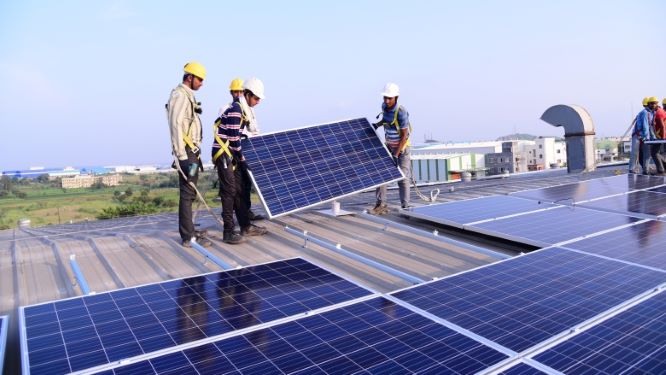Distributed Renewables Could Create 400,000 Jobs in India

The first annual jobs census measuring employment from decentralized renewables for rural electrification in Africa and Asia has estimated that by 2023, the sector will create 400,000 jobs in India, including 190,000 direct, formal jobs, almost double the current number, as well as 210,000 direct, informal jobs.
Supported by Schneider Electric Foundation and The Rockefeller Foundation, the census (surveying India, Kenya and Nigeria) aims to spotlight the energy skills needed to achieve SDG 7 ─ access to affordable, reliable, sustainable and modern energy for all.
[related_post]
“Access to electricity means access to jobs,” said Dr. Rebekah Shirley, Power for All’s Chief Research Officer and census lead researcher. “The Powering Jobs census offers strong evidence of the important link between energy access and employment in countries where rural joblessness is at record highs. Policy-makers, donors and the private sector have an opportunity to increase support for decentralized renewables and build a diverse, inclusive, and equitable workforce for the energy infrastructure of the future.”
Key Highlights:
- A significant employer: although just beginning to scale, decentralized renewable energy companies already directly employ as many workers (i.e. 95,000 in India) as the traditional utility-scale power sector, and that number is expected to more than double on average by 2022-23.
- A rural jobs multiplier: in addition to direct, formal employment, the sector also accounts for up to 5 times as many jobs created through the productive use of energy (such as crop irrigation) in rural communities being electrified for the first time.
- Engaging too few women: low participation of women in DRE sector — only about 25% of the workforce — is related to many broader socio-cultural challenges around gender stereotypes, recruitment biases, discriminatory business cultures, perceptions of gender roles and women’s representation in STEM education.
- Employing youth: the sector creates decent work for youth (currently representing 40% of all DRE jobs), which can be an important response to the growing challenge of youth unemployment in emerging economies.
The International Renewable Energy Agency (IRENA) estimates that off-grid renewables for energy access can create at least 4.5 million direct jobs by 2030, while GOGLA expects up to 1.3 million jobs by 2022 just from off-grid solar (excluding mini-grids). Yet today, sub-Saharan Africa has about 600 million people living without electricity and (excluding South Africa) only 227,000 people employed by the entire renewable energy sector ─ a tiny sliver, just 2%, of the global total of 11 million.
Published with permission from saurenergy.com




